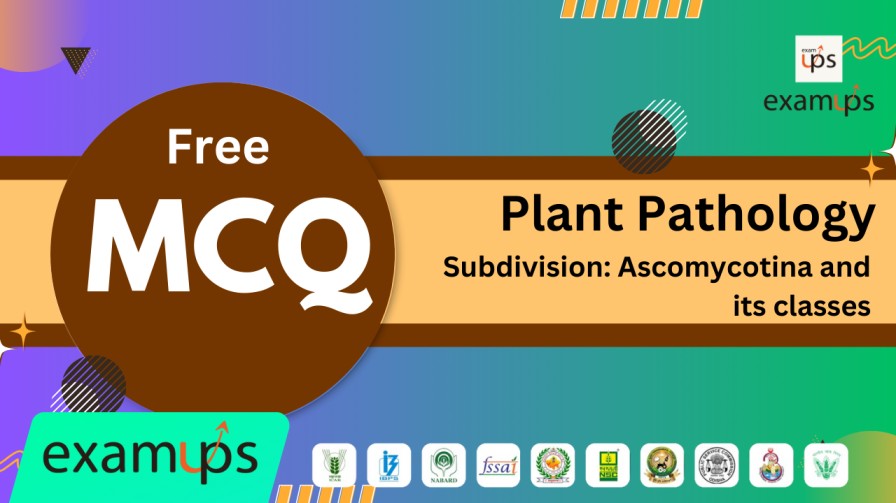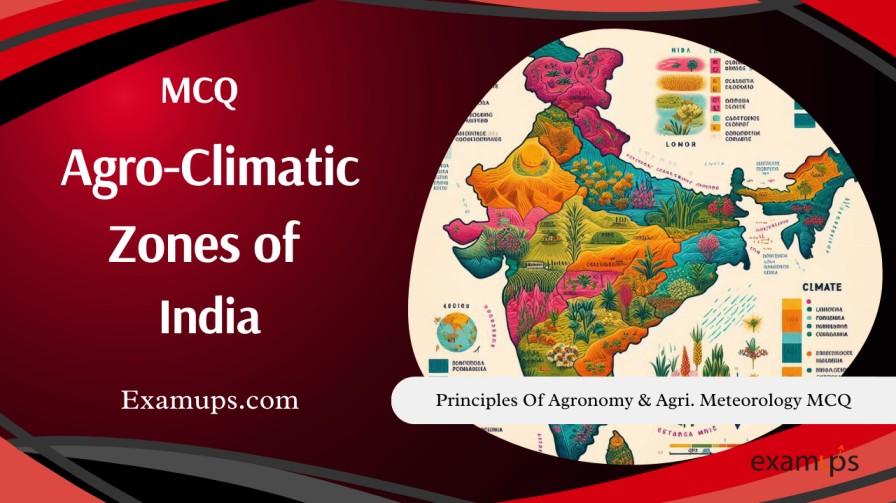Sowing MCQ like ICAR-JEF, ICAR-SRF, ICAR-NET, IBPS-AFO/SO, Pre-PG, BHU Pre-PG, IFFCO-AGT, CCI, FCI, B.sc, M.sc, etc.
Multiple Choice Questions on Sowing
- What is NOT a prerequisite for sowing?
a) Good tilth
b) Optimal soil moisture at sowing depth
c) High soil temperature
d) Manures and fertilizers
Answer: c) High soil temperature
Explanation: High soil temperature is not necessarily a prerequisite for sowing, as it can vary by crop and location. The essential requirements are good tilth, proper soil moisture, and the use of manures and fertilizers. - Which of the following is NOT a form of vegetative propagation used for sowing?
a) Seeds
b) Stem cuttings
c) Rooted slips
d) Tubers
Answer: a) Seeds
Explanation: Vegetative propagation involves methods like stem cuttings, rooted slips, and tubers, while seeds are used for regular sowing but do not qualify as a form of vegetative propagation. - Which of the following seed materials should be free from storage pests and seed-borne diseases?
a) Red rot in sugarcane
b) Tikka leaf spot in groundnut
c) Both a and b
d) Neither a nor b
Answer: c) Both a and b
Explanation: Seed materials should be free from pests and diseases like red rot in sugarcane and tikka leaf spot in groundnut to promote healthy crop growth. - Which characteristic is NOT required for seed material used for sowing?
a) Free from dormancy
b) High percentage of germination
c) High percentage of inert material
d) Viable
Answer: c) High percentage of inert material
Explanation: Seeds should be viable and free from dormancy and inert material to ensure good germination rates. - What type of propagation is used for sowing potatoes?
a) Stem cuttings
b) Tubers
c) Rooted slips
d) Rhizomes
Answer: b) Tubers
Explanation: Potatoes are propagated using tubers, which are storage organs that can sprout new plants. - Which factor indicates that a seed is likely to germinate successfully?
a) High purity
b) Free from dormancy
c) High viability
d) All of the above
Answer: d) All of the above
Explanation: A seed that is high in purity, free from dormancy, and highly viable is likely to germinate well. - Which type of crop would most likely require stem cuttings for sowing?
a) Sugarcane
b) Potato
c) Turmeric
d) Forage crops
Answer: a) Sugarcane
Explanation: Sugarcane is typically propagated using stem cuttings, ensuring consistent growth. - Why is soil moisture at sowing depth a critical prerequisite for successful sowing?
a) It supports seed germination and root growth.
b) It prevents soil erosion.
c) It helps control weed growth.
d) It maintains optimal soil temperature.
Answer: a) It supports seed germination and root growth.
Explanation: Adequate soil moisture at sowing depth helps seeds germinate and establishes a strong root system. - What issue can arise if seeds exhibit dormancy?
a) Seeds may not germinate when sown.
b) Seeds may germinate too quickly.
c) Seeds may contain pests.
d) Seeds may have low viability.
Answer: a) Seeds may not germinate when sown.
Explanation: Dormant seeds may not germinate immediately, leading to delays in crop establishment. - What percentage of germination is considered high for most crops?
a) 60-70%
b) 80-90%
c) 98-99%
d) 100%
Answer: c) 98-99%
Explanation: A germination rate of 98-99% is considered high, indicating most seeds will sprout and grow.
Multiple Choice Questions on Sowing Methods and Time of Sowing
- Which method of sowing involves placing seeds at specific locations, often in rows, with regular spacing?
a) Broadcasting
b) Line sowing
c) Transplanting
d) Direct seeding
Answer: b) Line sowing
Explanation: Line sowing ensures uniformity in plant placement, making it easier to manage crops and control weeds. - What can result from delayed sowing of rainfed sorghum beyond June?
a) Increased risk of disease
b) Increased yield
c) Decreased yield due to attack of shoot borer
d) Decreased water availability
Answer: c) Decreased yield due to attack of shoot borer
Explanation: Late sowing increases the likelihood of pest infestation, particularly shoot borer in sorghum, leading to reduced yield. - Which method of sowing involves scattering seeds over the soil surface and then incorporating them into the soil?
a) Dibbling
b) Broadcasting
c) Drilling
d) Line sowing
Answer: b) Broadcasting
Explanation: Broadcasting involves scattering seeds, followed by light tillage to cover them. - What is the optimal time for sowing Kharif crops in many regions?
a) Last week of October to first week of November
b) June or July
c) First fortnight of January
d) April
Answer: b) June or July
Explanation: Kharif crops are sown during the rainy season in June or July. - Which method of sowing involves planting seedlings that have been grown elsewhere into the main field?
a) Broadcasting
b) Transplanting
c) Drilling
d) Direct seeding
Answer: b) Transplanting
Explanation: Transplanting involves moving seedlings from nurseries into the main field.











